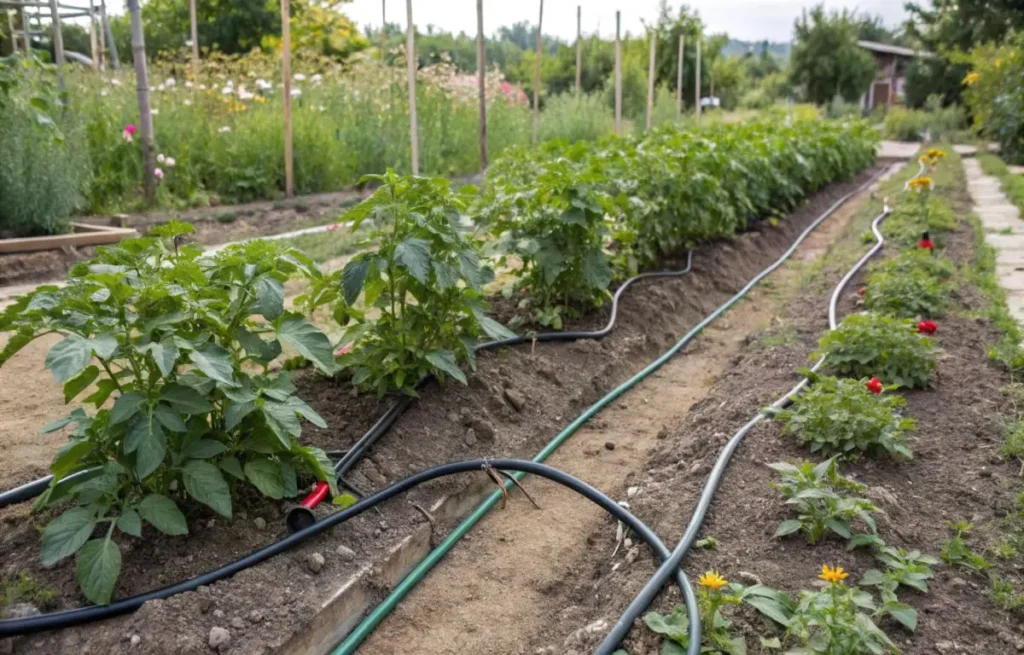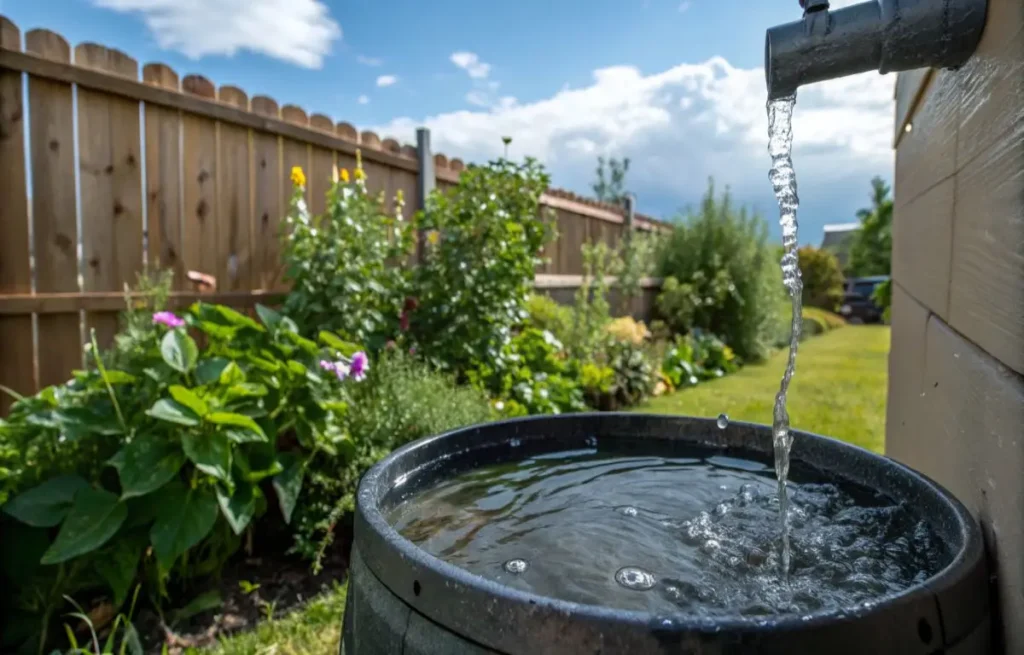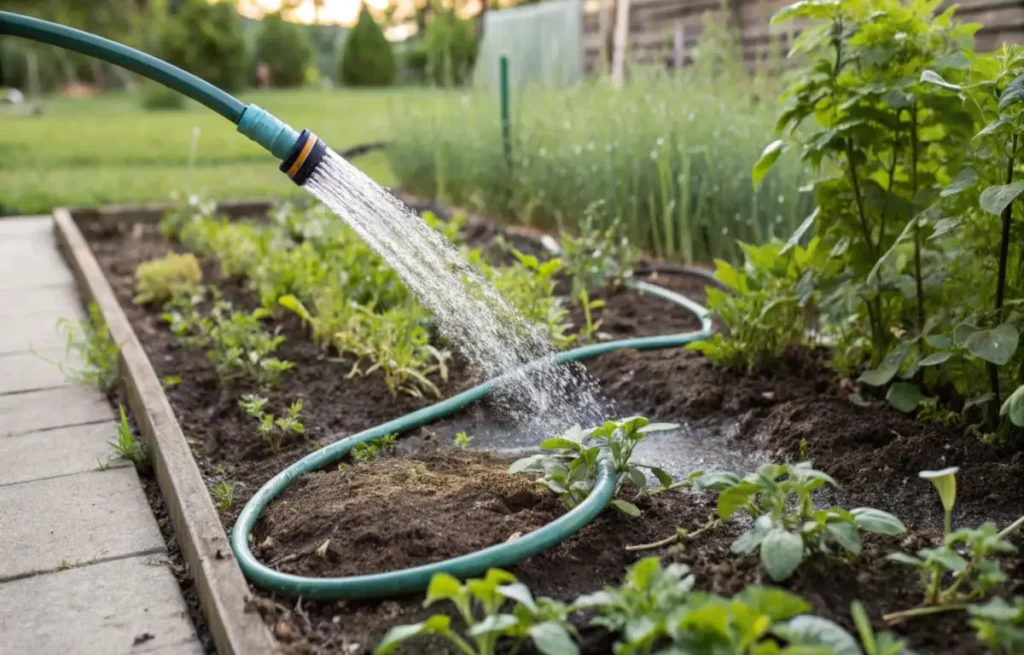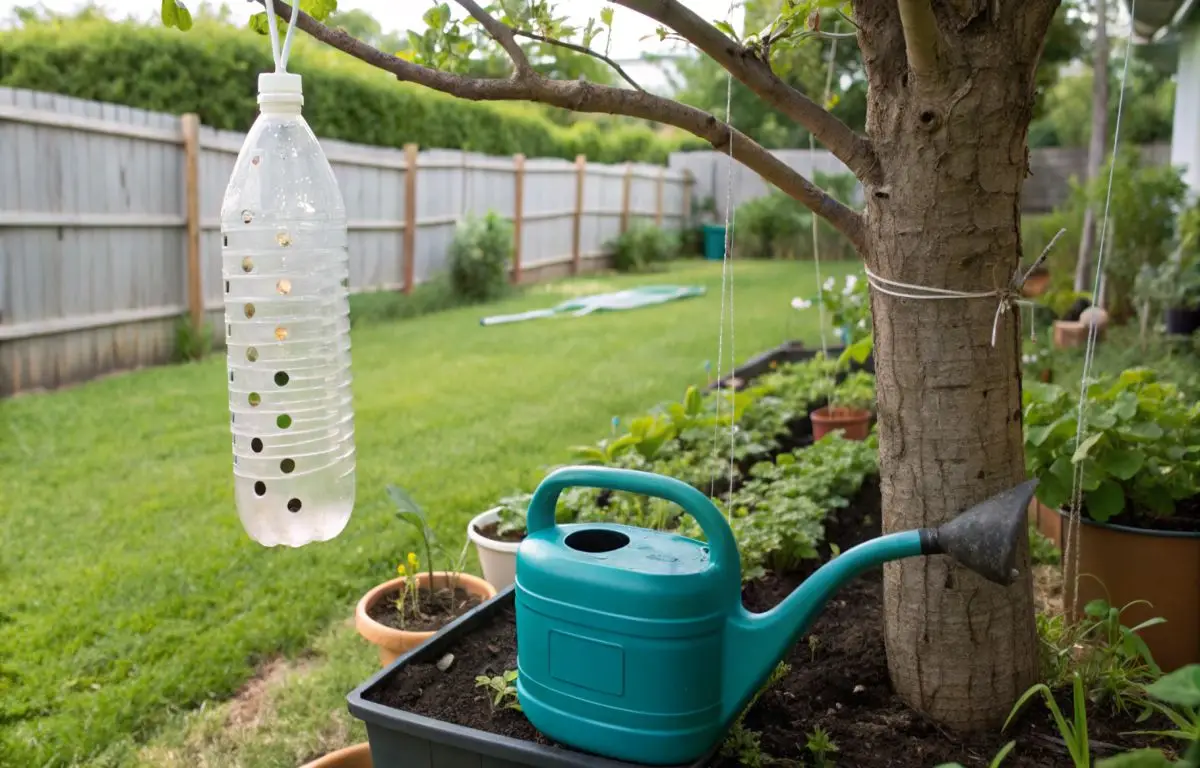Gardening can be a rewarding hobby, but it often comes with the challenge of managing water usage efficiently. Easy DIY garden irrigation hacks not only save you money but also contribute to a more sustainable and thriving garden. If you’re looking to reduce your water bills while ensuring your plants stay healthy, these simple and practical tips can help transform your gardening routine.
In this guide, we’ll explore effective DIY irrigation solutions that are budget-friendly, easy to set up, and perfect for both beginners and seasoned gardeners alike.
Create Your Own DIY Drip Irrigation System

If you’ve ever found yourself watering your garden for hours, you know how much water can go to waste. A drip irrigation system is a simple yet highly effective solution. This system allows water to drip slowly into the soil, directly at the roots of your plants, reducing evaporation and ensuring more efficient watering.
How Easy DIY Garden Irrigation Hacks Can Transform Your Garden
Drip irrigation systems can be tailored to your garden’s specific needs, allowing you to target individual plants. Unlike traditional sprinkler systems, they deliver water exactly where it’s needed, reducing waste and ensuring that water doesn’t evaporate under the sun. The key here is precision: each drop of water counts, making your garden more water-efficient and healthier overall.
If you have a mix of plants with varying water needs, you can adjust the flow of water to each area, creating the ideal environment for every plant type. Drip irrigation systems are great for gardens with drought-tolerant plants and those in areas with water restrictions. Over time, you’ll notice fewer wilting plants and a significant decrease in your monthly water bill.
Benefits of a DIY Drip Irrigation System:
- Saves water by delivering moisture directly to the roots.
- Reduces runoff, so your plants get all the water they need without waste.
- Prevents fungal diseases by keeping the foliage dry.
- Saves money on water bills, especially during hot months.
The Benefits of DIY Drip Irrigation for Water Conservation
A DIY drip irrigation system isn’t just an easy project—it’s also a great way to conserve water. By controlling how much water is dispensed and where, it helps ensure that you don’t overwater your plants, making it a perfect solution for those looking to save water while growing a beautiful garden.
Additional tips:
- Use a timer to automate the system and ensure consistent watering.
- Choose low-flow emitters to further reduce water usage.
Step-by-Step Guide to Building Your Own Drip Irrigation System
Building a drip irrigation system doesn’t require professional help. Here’s a simple step-by-step process:
- Plan your layout: Decide where you want to place your drip lines. You can lay out your system based on your plant arrangement, ensuring each plant gets direct access to the water.
- Gather materials: You’ll need tubing, emitters, a filter, and connectors. These can be found at most home improvement stores. The cost of materials is relatively low, especially when compared to buying a pre-made irrigation system.
- Install the tubing: Lay the tubing around your plants, making sure to space it evenly for optimal coverage. For better results, position the tubes near the root zones of the plants, as this is where water is needed most.
- Add emitters: Place emitters at the base of each plant or along the line to ensure each plant gets enough water. If you have larger plants, consider using adjustable emitters to increase or decrease the flow.
- Connect the system: Hook the tubing up to your water supply, and make sure to check for leaks. Turn the system on, and monitor it to see if any adjustments are needed.
Use Rain Barrels to Cut Watering Costs

Rain barrels are an excellent way to collect rainwater for your garden. By redirecting water from your roof to a barrel, you can store free water that would otherwise go to waste. This can significantly lower your water bill, especially during dry spells.
Easy DIY Garden Irrigation Hacks with Rain Barrels for a Greener Garden
Rainwater is naturally softer and better for plants than tap water because it’s free from chlorine and other chemicals. Using rain barrels ensures that your garden receives the best possible irrigation, helping plants thrive without the extra cost.
Instead of relying on the city’s water supply, rain barrels give you a sustainable, eco-friendly way to water your garden. Installing rain barrels around your home or garden can create a network of water sources that can be tapped into at any time. You can also use these barrels to collect rainwater for flower gardens and vegetable beds, which benefit from the chemical-free water.
How to Set Up a Rain Barrel:
- Choose the right barrel: Pick a food-safe barrel with a spigot at the bottom for easy access. Barrels come in a variety of sizes, but the bigger the barrel, the more water you’ll be able to store.
- Set up the downspout: Attach the downspout from your roof to the top of the barrel. Make sure to install a screen at the top to prevent debris from entering the barrel.
- Position the barrel: Place it in a location where it can catch as much rain as possible. Ensure the barrel is sitting on a level surface to avoid it tipping over.
- Connect the barrel to your irrigation system: Use hoses to direct the water where it’s needed in the garden. You can install a hose bib on the barrel to make the connection to your irrigation system easy.
Save Water and Money by Installing a Rain Barrel System
By investing in a rain barrel, you can conserve water and reduce your reliance on municipal supplies, especially during the summer months when water usage tends to increase. It’s an eco-friendly and practical solution that helps lower your bills and support sustainable gardening practices. Over time, the savings will quickly add up as you rely less on your tap water.
Pro Tip: Place your barrel on a platform so gravity can help the water flow more easily. A raised barrel will allow water to drain out more smoothly, making it easier to use in your irrigation system.
Soaker Hoses: The Perfect Solution for Deep Watering

For gardens with a lot of plants that need a consistent water supply, soaker hoses are another excellent DIY option. These hoses release water slowly along their length, soaking the soil evenly and deeply.
Easy DIY Garden Irrigation Hacks: Maximizing Efficiency with Soaker Hoses
Soaker hoses are a great alternative to sprinklers because they deliver water directly to the soil, preventing surface runoff. This system is especially beneficial for vegetable gardens and flower beds where deep watering is crucial for strong root development.
Advantages of Soaker Hoses:
- Deep watering promotes stronger root systems.
- Even water distribution ensures that every part of your garden gets enough moisture.
- Low maintenance: Simply lay out the hose and let it do the work.
Because soaker hoses distribute water evenly, they help avoid overwatering in some areas while under-watering others. This results in healthier, more resilient plants.
How to Use Soaker Hoses for Deep, Water-Efficient Irrigation
To use soaker hoses effectively, follow these steps:
- Lay out the hose along the garden rows or beds. Make sure the hose touches the soil in all the places that need watering.
- Connect it to your water supply: You can hook it up to a faucet or a rain barrel, depending on your setup.
- Ensure proper coverage: Make sure the hose is spread evenly to cover the entire planting area. You may need to use more than one hose for larger gardens.
- Test the system: Run the hose for a few hours to check that water is being absorbed properly into the soil. Adjust the placement as needed.
Benefits of Soaker Hoses for Healthy Plants and Lower Bills
Soaker hoses allow you to water deeply while conserving water. They’re particularly beneficial in dry climates or areas with water restrictions, making them a valuable addition to any water-wise garden.
Pro Tip: Make sure to check the hose regularly for clogs or leaks to keep the system running smoothly.
Upcycling Everyday Materials for DIY Irrigation Solutions

Repurposing everyday materials is not only cost-effective, but it’s also an environmentally friendly way to implement irrigation systems. Using recycled materials like plastic bottles, milk cartons, or old tubing can create a DIY garden watering system that works just as well as commercial products.
Simple Easy DIY Garden Irrigation Hacks with Recycled Materials
Creating a garden irrigation system from upcycled materials is a fantastic way to reduce waste while saving money. For example, you can create a self-watering system using plastic bottles by poking holes in the bottom and burying them near your plants. This ensures water is delivered directly to the root zone.
Ideas for Upcycled Irrigation Solutions:
- Plastic bottle irrigation: Poke holes in a bottle and bury it upside down in the soil for a slow-release watering system.
- Milk jug watering system: Cut the bottom off a milk jug, poke holes in the top, and bury it in the garden to water the plants directly.
These simple DIY projects take only a few minutes to set up and can be highly effective at keeping your plants hydrated.
How to Build a Simple Plastic Bottle Irrigation System
- Gather materials: Find a few plastic bottles and poke small holes in the bottom.
- Bury the bottle upside down near the base of your plants, ensuring the holes are buried underground. This allows water to slowly seep out and hydrate the plant’s root system.
- Fill the bottle with water: As the plant needs water, the moisture will slowly drain from the bottle.
Conclusion
Incorporating easy DIY garden irrigation hacks into your gardening routine is an excellent way to save both water and money while ensuring your plants thrive. From simple solutions like drip irrigation systems and soaker hoses to rain barrels and upcycled materials, these sustainable methods allow you to take control of your water usage and contribute to a greener environment.
By making these small changes, you’ll not only reduce your water bills but also help conserve a vital natural resource. The beauty of these DIY projects lies in their simplicity, cost-effectiveness, and adaptability to various garden sizes and types. Whether you’re a beginner gardener or an experienced plant enthusiast, these irrigation hacks can be easily customized to suit your needs.
So, why wait? Start implementing these hacks today and enjoy the benefits of a healthier, more sustainable garden that’s easier on your wallet and the planet. Happy gardening!
FAQs
1. How can I save water in my garden?
By using efficient irrigation systems like drip irrigation, soaker hoses, and rain barrels, you can conserve water while ensuring your plants thrive. Mulching and using timers also help reduce water waste.
2. What is drip irrigation, and how does it work?
Drip irrigation delivers water directly to the roots of your plants, minimizing evaporation and runoff. It’s an effective way to conserve water while promoting healthy plant growth.
3. What is a DIY soaker hose, and how do I make one?
A soaker hose is a porous tube that slowly releases water into the soil. To make one, puncture holes along a garden hose, place it near your plants, and attach it to a water source.
4. Can I use a rain barrel for irrigation?
Yes! A rain barrel collects rainwater from your roof, which you can use for watering your garden, reducing your reliance on mains water and saving money during dry periods.
5. What are the benefits of smart garden irrigation systems?
Smart irrigation systems adjust watering based on weather conditions and soil moisture, making them energy-efficient, water-conserving, and perfect for tech-savvy gardeners.
People also read:
Affordable PVC Pipe Ideas For DIY Garden Structures And More
